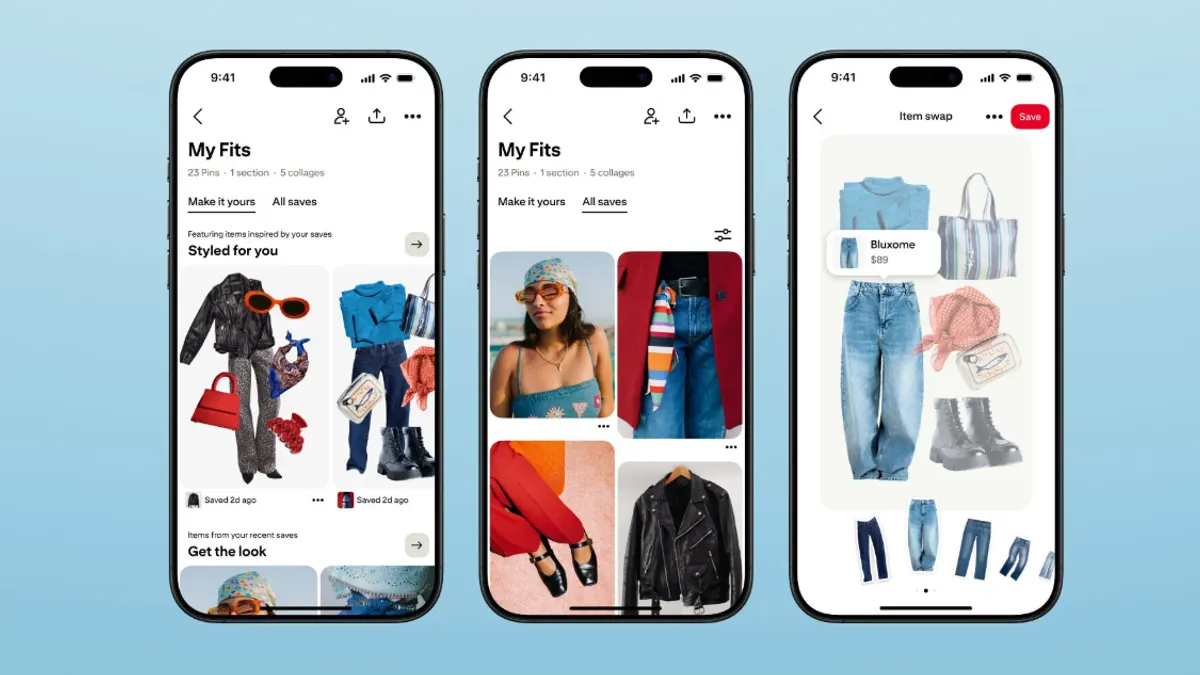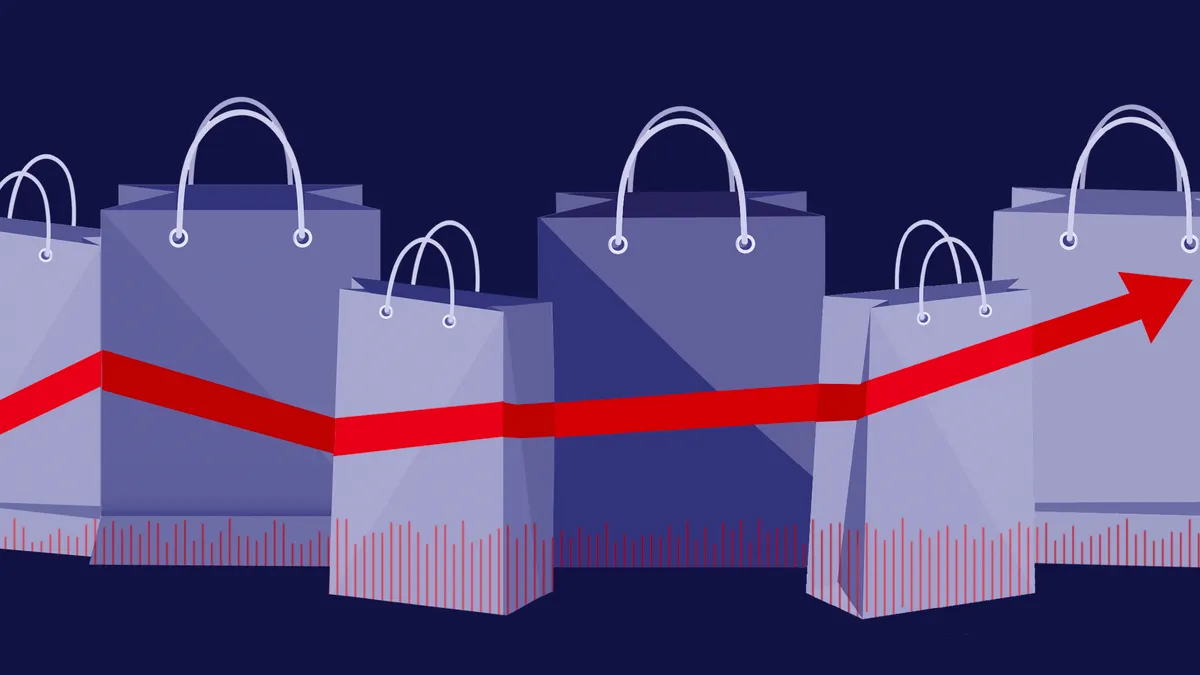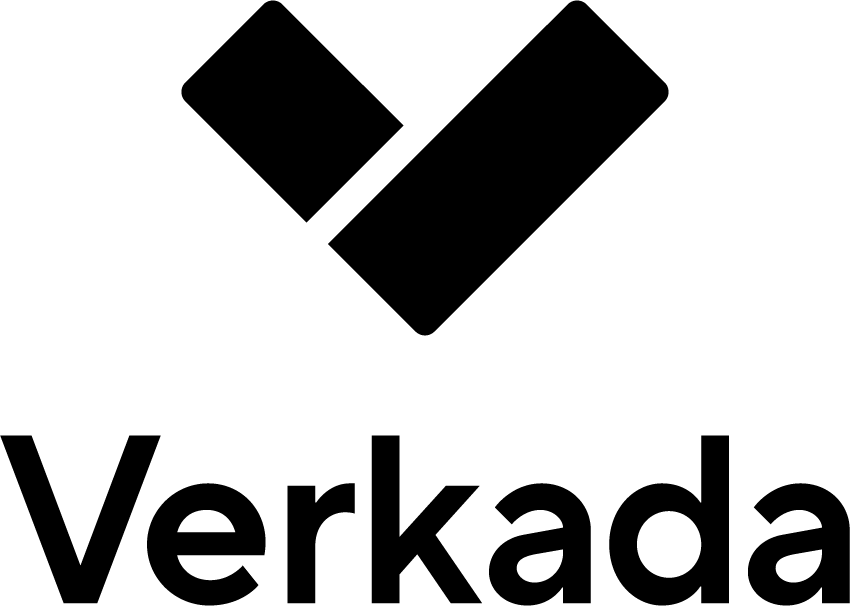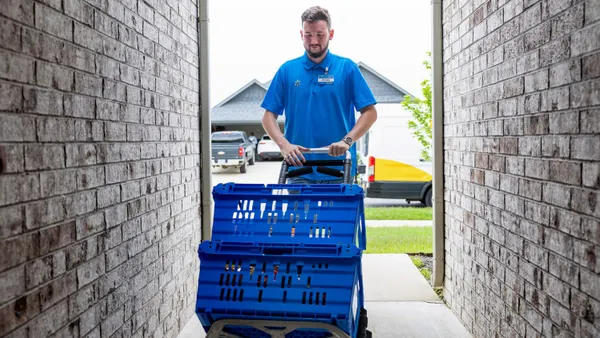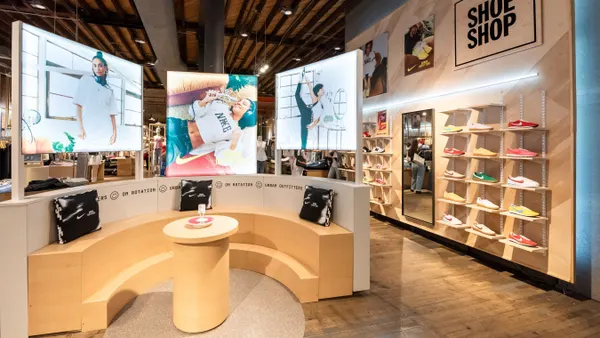Dive Brief:
- Pinterest is deploying AI to power a series of new shopping and product discovery features, the social media platform announced Monday.
- In the coming months, the company will introduce updated boards and new tabs based on a user’s saved Pins. “Make it yours” recommends fashion and home products and content, “more ideas” recommends related Pins in other categories like art and beauty and “all saves” is a way for users to view their previously saved Pins.
- The company is also testing “styled for you” and “boards made for you” features for its Canadian and U.S. users. “Styled for you” generates AI-powered fashion collages from saved Pins so users can create and buy new outfits, while the “boards made for you” feature generates personalized boards using AI and “editorial expertise,” the company said.
Dive Insight:
With its new, AI-powered features, Pinterest aims to help users experiment with new looks and streamline the shopping experience.
Pinterest has “effectively become an AI-enabled shopping assistant,” CEO Bill Ready said on the company’s Q2 earnings call.
As the feature rolls out in the U.S. and Canada in the coming months, the “boards made for you” tool will display customized boards in users’ feeds and inboxes, allowing them to browse shoppable content.
“Boards are central to what makes Pinterest an inspirational experience for our users, so we’re investing in making them even better,” Vicky Gkiza, vice president of product management, said in a statement. “Today’s updates make boards into a personal shopping assistant, powered by AI, to help users move from admiring their dream styles or spaces to actively achieving them.”
The latest features come after a slew of recent changes to the social media platform. In August, the company announced that it had created a proprietary generative retrieval model for its search and related functions to provide a personalized user experience.
In June, Pinterest Ad Labs began piloting AI-powered automated collages to help brands curate shoppable content. Last month, the company unveiled its “where-to-buy” links feature, allowing users to find products in stock across multiple retailers.


